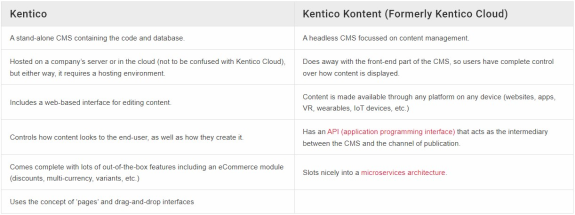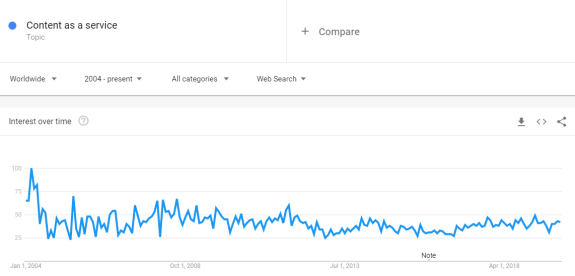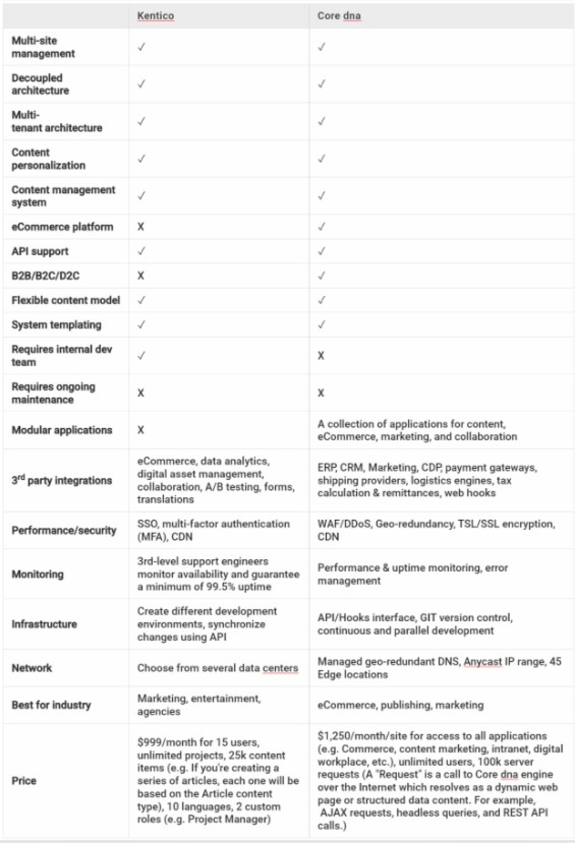Kentico Kontent: Is It the Headless CMS You Need?

Kentico Kontent promises flexibility and scalability in a crowded headless CMS market. But how does it truly stack up against the competition—and is it the right fit for your digital strategy?
With the headless CMS now focussing its marketing messaging around CaaS (content as a service), I cut through the noise to find out precisely what Kentico Kontent is all about, how it differs from the old Kentico, and how it stacks up against the competition.
Key takeaways
- Kentico Kontent is a headless CMS focused on CaaS (Content as a Service), helping organizations streamline and centralize content management.
- CaaS offers major benefits, including better efficiency, enhanced collaboration, improved agility, and higher content quality.
- Pros: User-friendly, great customer support, fast data transfer, advanced editing tools, and good for proof of concept.
- Cons: Can get cluttered at scale, lacks strong analytics and version control, pricey for mid-sized teams, and struggles with consistency.
On this page:
What is Kentico Kontent?
Kentico Kontent is the new name for Kentico Cloud. The rebrand marks the headless CMS’s completed transition to CaaS (Content as a Service.) Content creation is a messy business, and organizations frequently struggle to unify and streamline content across their entire operations. The bigger the company, the more entangled the network becomes.
Duplicate versions of the same content scattered across different CMSs; content buried in silos; an inability to collaborate effectively; consistent delays in content creation… These are some of the content management challenges we face, and the types of issues Kentico Kontent is positioned to address through CaaS.
The days of creating content in Word, then copy-pasting it into Google Docs, sharing revisions over email, and copy-pasting it into your CMS are numbered. Or, at least that’s the plan.
What’s the difference between Kentico Kontent and Kentico?
The company is Kentico Software. And they offer several eponymously-named software solutions, the most relevant to this article being “Kentico,” the company’s stand-alone CMS dating back to 2004, and “Kentico Kontent” (until very recently “Kentico Cloud”), the company’s headless CMS or CaaS. Both have their pros and cons.
So, what’s the difference?

Is Kentico Kontent open source?
No. While Kentico Kontent does have several SDKs (software development kits) and other open-source tools on GitHub, it’s proprietary software (closed source).
The open-source vs. closed-source debate rages on with no end in sight. Proprietary software is generally more secure and usable with better service and support.
Open-source software can be seen as more innovative (not always the case) as software is worked on by a much larger pool of developers without limitations. And, it is usually free, although with paid-for add-ons.
How much does Kentico Kontent cost?
The entry package, Starter, costs $999 per month and suitable for simple projects. You get 10 users ($10/mo per additional user), 3 languages, and 10,000 content items (specific pieces of content) to play with.
From there, the cost jumps to $1,999 per month for the Business package, which offers 25 users (again, $10/mo per additional user), ten languages, and 25,000 content items, as well as two custom user Roles with a title and configurable permissions.
The Enterprise package is priced according to user requirements and comes with 24/7 support, SLA guaranteed uptime, and other goodies.
What Is CaaS (Content as a Service)? Just another buzzword?
Before getting into the nitty-gritty of CaaS, there is one burning question we should address:
Is “CaaS” just the latest in a long line of CMS-related buzzwords?

I think the only honest answer to that would be: “yes”. Everyone understands what SaaS means.
CaaS is simply a term coined by companies wanting to market their products in a familiar and intelligible way. But, the name is a good one, and when it comes to Kentico Kontent, it is a very useful moniker for the service it provides.
In the most basic terms, CaaS is synonymous with “content infrastructure” - how a company integrates content into its stack. CaaS unifies all of the often-disparate content from every different team within a company.
It efficiently manages how it is created, tracked, organized, and ultimately delivered. CaaS benefits from the pros associated with SaaS, such as its cloud-based infrastructure, automatic upgrades and updates, and inherent scalability.
5 ways that CaaS (Content as a Service) can benefit your company
Here are 5 ways your company can benefit from CaaS:
1. Greater efficiency
The last thing you want is for staff to be duplicating each other’s work - a complete waste of time and resources. Yet, this is so often the case with a traditional monolithic CMS. Employees have no visibility over (or access to) the content created by others, especially those in other departments, so they produce more-or-less the same thing again.
Even finding your own content can be a challenge sometimes, especially when a file has been misnamed or vanished under some other mysterious circumstances.
I think we’ve all been guilty of just starting over rather than setting out on a painful and potentially fruitless search for a missing file. Let’s say (to be polite) that this is incredibly infuriating.
With CaaS, content is automatically kept safe (auto-saved, backed-up and synced), orderly and accessible to all. Co-workers are free to use each other’s content - editing, and improving the master copy as they see fit.
Unlike legacy CMS solutions, which typically tie content to web pages, CaaS creates and stores content as modular pieces - ‘chunks’ grouped by type and topic that anyone can slot into their content as required.
2. Enhanced collaboration
Collaboration is the lifeblood of innovation, yet is so often lacking in all but the most creative enterprises.
CaaS gives everybody accesses to a categorized, centralized repository of content pieces. Users are assigned roles and can work on a single piece of content concurrently, commenting, editing, reviewing, and tracking progress in real-time, so the output is continuously improved.
3. Better organization
Large companies often operate multiple different CMSs, managed by various departments, using different standards and software types (ERP, CRM, PIM, DAM). Unsurprisingly, this kind of infrastructure does not operate like a well-oiled machine, and blobs of content float around in non-productive silos.
CaaS provides an all-encompassing, holistic view of all content and its lifecycle. Viewing content in this way not only provides much-needed structure to an otherwise chaotic system, but it offers potent insights, like why some content is working better than others.
4. Improved agility
With content categorized and ready-to-go, companies can be flexible and responsive to the market. Tried and tested chunks of content can be quickly reassembled to form an article about the day’s hot topic, or pieced together to build a landing page for an offer ending soon. Content can be shared across departments, approved when required, and published on any channel.

5. Higher content quality
CaaS stores a master copy of all content for teams to incrementally improve upon over time. This cumulative process creates higher quality content across the board, but crucially also promotes consistency, something we all strive for when communicating with customers.
No more mixed messages. Many of the obstacles that stand in the way of excellent content marketing are removed.
Content-first, design-second
By now, it’s generally accepted that content trumps aesthetics when it comes to designing for the web.
In the past, web design was concerned with creating something ‘beautiful’ or visually appealing. The content was just an afterthought. Text boxes in wireframes were filled with Lorem Ipsum dummy text to be filled later with whatever content fitted the constraints.
The content-first approach (the cornerstone of CaaS) recognizes the supremacy of content on the modern web. It means devising content first and working the design around the specific messages you are trying to convey.
Nobody’s impressed by flashy web design anymore. We want to get to the content with as little effort as possible.
Is Kentico Kontent a headless CMS?
Yes. Unlike the old Kentico, Kentico Kontent is a headless CMS, so it does not come with a front-end.
It’s more concerned with managing content and less with how it looks. This decision is left up to the user who has complete control over how and where content is displayed.
Kentico Kontent as a headless CMS: The pros and cons
Now that we know what Kentico Kontent is, here are the pros and cons of Kentico Kontent:

Pro 1: User-friendly so ideal for non-technical users
The user interface is clean, intuitive, and easy to navigate. And, all documentation and examples are well-written and easy to follow. The result: it’s an excellent option for non-technical users and makes onboarding new employees a breeze.
Pro 2: Responsive customer support for all pricing plans
Customer support is top-notch - fast, helpful, and comprehensive. Priority chat and email are offered to Business customers, while Starter customers have to make do with community support only.
Pro 3: Fast data transfer in both directions
The software performs consistently well with excellent API availability. Content is transferred rapidly in both directions, from Kontent to applications and from the outside web into the Kontent infrastructure.
Pro 4: Intelligent and feature-rich content editing
The content editor has plenty of advanced options such as content suggestions, comments, and insertion of nested documents and objects.
Pro 5: A quick and inexpensive way to run a POC
Unlike the introductory deals offered by some other headless CMS’s, Kentico Kontent’s Starter package, with 5,000 content items and the ability to add up to 20 users, is actually very comprehensive. It’s ideal for quickly assembling a POC (proof of concept).

Con 1: Interface becomes cluttered when operating at scale
While the Kentico Kontent’s clean user interface is one of its pros, it becomes a bit messy when it comes to large implementations with thousands of content items. Although, they’ve recently added a new feature called “Web Spotlight”, which enables users to keep content in a structured, channel-dependent format.
Con 2: Falls short when it comes to reporting
The analytics on offer are somewhat basic, especially when it comes to audience insights.
Con 3: Pricing plans won’t suit everyone
There is a big jump in price between the Starter package, which is free, and Business, the first paid package, which costs $999. Many small companies that fall somewhere in the middle in terms of requirements will find the price hike hard to swallow
Con 4: Better version control is needed
Advanced version control for content items is sadly missing, making it hard to track changes.
Update: Kentico Kontent now allows you to compare and restore versions.
Con 5: Difficult to maintain consistency
Consistency is hard to manage when it comes to enterprise-level projects, and Kentico doesn’t do enough to automate the process of data validation. Custom validation rules and better field restrictions would be a good start.
Kentico Kontent vs. Core dna














